#only to find out that the playwright is a lesbian
Explore tagged Tumblr posts
Text
Second Stage announced its fall lineup and, hm...
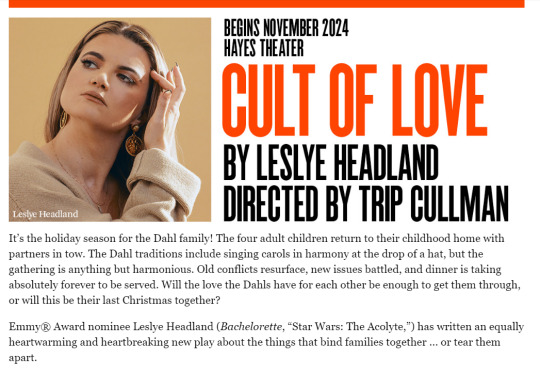
On one hand, this means we get a fairly sizable cast, and I do like that. And I'm generally a fan of big messy family dramas, but the contemporary takes on this concept have been so uninteresting as of late. This play seems way too similar to last season's Appropriate, and I hated that. It was trying to be August: Osage County, and just didn't do it for me. What about this play is different? What could this playwright bring to the table that hasn't been served before?
#i was being so damn snarky in the tags about a white woman probably writing a gay twink couple into the family in a weird fetishy way#only to find out that the playwright is a lesbian#wait fuck. abort post. i have no choice but to support this fully
0 notes
Text
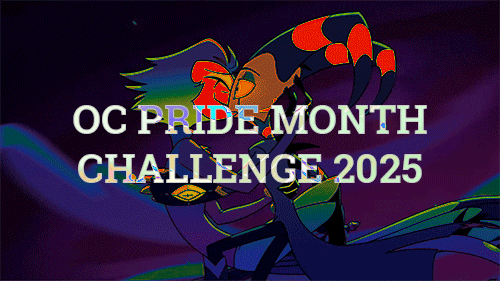
WELCOME TO PRIDE CHALLENGE 2025!
Hello guys, gals, nonbinary pals, and every other lovely person in this community! The time has come once again for pride challenge, now in a time where we need pride in our LGBTQIA+ communities more than ever. Check out the last day of the challenge to fill out the form to enter the exchange! BIG THANKS to @come-along-pond for being such a big helper and supporting me throughout the absolute nightmare of a few months it has been, as well as coming up with the brilliant culture idea.
Rules
This challenge is for LGBTQ+ ocs only… hence why it’s called the pride challenge.
Tag your posts with #opc2025 in order to have them reblogged. (please do not tag any non-challenge related edits with this)
DON’T steal edits. If you feel your edit or someone else’s has been stolen, report it to our submission box by following these guidelines.
If you want to make a crossover edit with somebody else’s oc, make sure the other person is okay with crossovers.
Feel free to send us any questions and keep in mind that all challenges are up for interpretation.
Be kind!!
WEEK ONE: IDENTITIES
Day One (June 1st): Gay
Make something for an oc that identifies as gay!
Day Two (June 2nd): Lesbian
Make something for an oc that identifies as a lesbian!
Day Three (June 3rd): Bi
Make something for an oc that identifies as bisexual and/or biromantic!
Day Four (June 4th): Pan
Make something for an oc that identifies as pansexual and/or panromantic!
Day Five (June 5th): Aro/Ace
Make something for an oc who identifies with the aro-ace spectrum!
Day Six (June 6th): Poly
Make something for an oc who is in a polyamorous relationship and/or identifies as poly in anyway!
Day Seven (June 7th): Gender
Make something for an oc who is not cisgender!
Day Eight (June 8th): Anyone Else (Or Again)
Make something for an OC who is LGBTQIA+ in a way we missed in previous days, or take the chance to do another oc who identifies with some of the previous prompts!
WEEK TWO: PROMPTS
Day Nine (June 9th): Terms of Endearment
Make an edit or write about the term(s) of endearment your OC calls their love interest, or the other way around!
Day Ten (June 10th): Live/Life
Show a moment where your oc embraces life, even if it’s messy, bold, or scary. Or show some of the most important moments in their life.
Day Eleven (June 11th): Revelation
Your OC discovers something important about themselves or their identity. What do they realize, and how does it change them or the way they see the world? Maybe a certain someone helped them come to this revelation?
Day Twelve (June 12th): Joy
Show a moment where your OC feels truly happy. What brings them joy, and what does it look like when they let themselves feel it fully?
Day Thirteen (June 13th): Reclaim
Your OC takes back something that was taken from them—like their name, identity, life, confidence, or a word. What are they reclaiming, and why does it matter to them?
Day Fourteen (June 14th): Pride
Your OC feels proud of who they are. What makes them feel confident, strong, or seen? Show a moment where they stand tall and own their identity, their journey of finding pride, or what pride means to them.
WEEK THREE: QUEER CULTURE
Day Fifteen (June 15th): LGBTQIA+ Visage
Choose a queer visual artist (painter, photographer, fashion designer, sculptor, etc.) and make something for your oc using their art, whether that's through writing or edits!
Day Sixteen (June 16th): LGBTQIA+ Writers
Choose an LGBTQIA+ author, poet, or playwright. What would your OC think of their writing? Create a scene, moodboard, or quote-based art that reflects their connection.
Day Seventeen (June 17th): Pride On Screen
Celebrate LGBTQIA+ film or television. Base your OC’s look, vibe, or a short drabble on a queer movie/show or character that resonates with them.
Day Eighteen (June 18th): LGBTQIA+ Music Icons
Pick a queer musician or band (past or present) and create something inspired by their work. How would your OC connect with this artist’s music or vibe?
Day Nineteen (June 19th): Queer History
Pick a moment, movement, or figure from LGBTQIA+ history and imagine how your OC would react to it—or how they’d fit into that time. Would they be marching at Stonewall, creating zines in the '80s, or finding kinship in underground spaces?
Day Twenty (June 20th): Role Models
Maybe you want another chance to highlight someone from the previous challenges, or maybe your OCs connection to queer culture and their queer role models are a fellow oc or character in their canon universe. Either way, celebrate the queer icons who helped your oc connect to the culture, accept themselves, or someone they aspire to be too.
Day Twenty-One (June 20th): Freedom for Joy
Celebrate any other aspect of queer culture-- perhaps your ocs pride outfit/celebration, your ocs drag persona, their coming out, or anything else you can think of!
WEEK FOUR: RANDOM
Day Twenty-Two & Twenty Three (June 22nd & 23rd): Alternate Universes
Put your OC in a different world, fandom, or setting—fantasy, sci-fi, historical, anything fun! Show how their identity stays true, no matter where they are.
Day Twenty Four & Twenty Five (June 24th & 25th): LGBTQIA+ Tropes
Tropes are a ton of fun, and there’s a trope for basically everything! Take a look at this list (or come up with your own) and apply them to your ocs!
Day Twenty-Six (June 26th): Survival & Strength
Share how one of your ocs navigated homophobia or adversity.
Day Twenty-Seven (June 27th): Before & After
Show their transformation in self-acceptance.
Day Twenty Eight & Twenty Nine (June 28th & 29th): Wave Your Flag(s) High
Celebrate your OC’s identity by drawing inspiration from their pride flag(s)!
Day Thirty (June 30th): Pride & Presents
Fill out this form by May 30th, get your match on May 31st, and send in your gift by June 26th! We're closing sign-ups a bit early to make sure everyone has plenty of time to create something truly special. This exchange will follow the same format as past @ocpotluck events! ONCE AGAIN, HERE'S THE FORM! Guidelines Gifsets: → 8+ gifs if using two smaller columns → 5+ gifs if using one larger column → Please only use gifs you’ve made yourself Graphics/Manips: → Minimum of 2 images Aesthetic Boards: → Must include 9 images or more Writing: → At least 500 words Playlists: → Minimum of 10 songs Drawings: → Must include some color → Sketches should be complete and decently detailed Mix & Match Gifts: → Totally allowed! Just be sure to include at least 4 total pieces (e.g. 2 gifs + 2 manips)
51 notes
·
View notes
Note
Hi hi!
I loved your rants on the Traveler and read your pinned post and was just curious to hear about your destiny OCs (or anything else you want to talk about honestly)! Please ramble as it's always a good time to read to have someone go on in detail about their interests.
Light be with you!
Greetings!!!
This was such a sweet message and I’m delighted that you found an interest in the things I discuss on this blog!!! Thank you so much for the kind words and for wanting to hear about my ocs!!
Okay so we have- *I fall down a comically long flight of stairs with my box of ocs as they go everywhere* Sorry, sorry!
Truth be told, I have a LOT of ocs from all the different species and societies of Destiny as I have been into the game for practically two-thirds of my life, more than I can possibly disclose in just one post (especially because I can talk forever about these things!!)
So, I thought it would be fun if I described my many characters and their stories as silly blog/news titles and opening statements! This is only a small handful of my ocs, but if you guys want more or see one idea you’d like to hear more of, I’ll consider posting additional content of them!
Here we go:
Infamous deathsinger-school drop out meets agoraphobic Eliksni captain at Eliksni-Hive bar, requires his and his sardonic, elder dreg‘s protection against her vengeful knight sister.
Small Uluran girl tends to her family farm with her Psion in-house caretaker, finds out the only thing more troubling than a poor harvest is Torobatl politics as her caretaker brings his fragile partner into the household.
Local Last City ghost sees success at the opening of her new therapy café despite not having hands and only employing other guardian-less ghosts.
Top ten activities to do with the goat your Witness does not approve of, but your acolytes adore! (Number 4 will certainly unleash its rage!)
BREAKING: Awoken guardian and her exo best friend are kicked out of Spider‘s Palace after starting a drunken fight over a gambling dispute for the 20th time. “I remember being young, desired, out until dawn, and unbothered by responsibilities” says their middle-aged Psion fiduciary.
This Vex harpy enjoys listening to a vagrant exo hunter play his flute and doesn’t enjoy Minotaurs at all according to the vagrant hunter that menacingly approached us.
EXCLUSIVE: We interviewed the Young Wolf on why they continue to slay gods and they said “There really isn’t much else to do and my only friends are Ghost and Crow”.
Hundreds dead and thousands more injured after a fairy betrayal in the Court of Understanding left the Great Navigator paranoid that necromancy was spreading amongst his closest circle (A fairy is a Hive class I invented that is akin to court jesters for the upper class, especially the Osmium siblings. They are light-weight and agile, possessing the ability to float, while also wielding long-range weaponry. I definitely plan to explain this concept in the future and perhaps provide artwork for them!)
Long lost sibling of the architect of The Witness found in reclusive cabin with non-verbal child, told us to “Fuck off” and “Tell that disturbed prophet I want nothing to do with them”.
How to answer your young child when they start asking questions like “Why do our neighbors have four arms?” and “If the Final Shape happens, do I still have to go to school?”: A guide written by an average Last City dad with a curious daughter.
Whats better than the daughter of a baron and a cynical knight running away to live a life of piracy and blasphemy together? Studies show it’s the daughter of a baron and a cynical knight doing all of that AND being lesbians.
Renowned Hive romantic novelist takes acolyte playwright under his wing after their work reaches acclaim in the Court of War for its depiction of the Eater of Hope’s trials with redemption and love. “This will definitely win back the hat loving wizard that I had spawn with” the novelist claimed as he flipped his decadent cape.
Old Psion yells “All paracasual beings need to die in their rotting entitlement, especially that red bloated bastard and that big eyed freak he calls ‘My Mistress’!”and immediately dies after telling his aids about his time spent directly under Nezarec.
HEARTWARMING: This Lubraen stalker welcomes newcomers by giving them a tour around the city and making their bigotry apparent.
Is this the style of the summer? Qugu person sports new curled tendril mane as they embrace the end of everything.
She’s a beefy wizard, he’s a scrawny knight, they are irritating rivals: The couple that fell in love again after becoming lucent thanks to their devoted spawn.
Potential assassin of the Witness found and held under that black liquid it comes out of until their will falters. “I had to do something to protect them. No one protected my planet. I didn’t care how much I’d pay for it” stated the now-disciple fish creature.
I have tons of concepts remaining and I thoroughly love all these characters, but I don’t want this post to be too long!! I adore expanding on unexplored areas of Destiny lore and I wish I had the time to make content for my ideas!!
Thank you again for the question and I hope I adequately answered it!! Light be with you too!!
#destiny 2#destiny#destiny the game#d2#the witness#destiny witness#destiny oc#destiny hive#destiny vex#destiny eliksni#eliksni#destiny psion#destiny lubraen#nezarec destiny#nezarec#destiny oryx#oryx the taken king#destiny cabal#destiny uluran#destiny qugu#im just tagging everything atp#precursors destiny#if you guys have any questions or want further explanations do not hesitate to ask!!!#dms and asks are always open#i just need to get better at answering dms#maybe I’ll get on my fanfiction and fanart grind#thank you so much for the ask!!!! I’m touched you wanted to hear me ramble!!!#i hope i did this ask justice!!!!#sorry for any typos it is late
28 notes
·
View notes
Text
My Top 10 dark academia stageplays:
#10 Cleansed by Sarah Kane
This playwright is known for deconstructions of stageplays themselves. Kane's later works replaced characters with voices, or did away with settings, and became so avant-garde that they weren't shows anymore but experiences. While Cleansed still had something like a plot or characters, it's a surrealist story set at a university—according to the script—that nobody treats as a university because they're only trapped there by a serial-killer torturer man. It is gory, depending on the stage effects budget many audience members are prone to walk out, but if you can withstand the shows of violence then you might find that there is meaningfulness at every instance of it.
#9 Rope's End by Patrick Hamilton
The morality of murder as discussed by elitist post-grads. I think The Secret History fans would like this for the similar themes. There was a movie adaptation in 1948 directed by Alfred Hitchcock.
#8 The Children's Hour by Lillian Hellman
There is a movie version from 1961 that I consider "malicious compliance" to the Hays Code policy of bury-your-lesbians. The doomed-to-death character was not a bad person, and an intolerant society is worse off for having lost her.
#7 The Effect of Gamma Rays on Man-in-the-Moon Marigolds by Paul Zindel
Tilly Hunsdorfer has a science fair project to put together, but her home life continues a legacy of child abuse. I have not watched the 1972 film adaptation, but the internet has informed me of its existence.
#6 The Awakening of Spring by Frank Wedekind
Written in 1891, translated into English by Edward Bond in 1974, again by Ted Hughes in 1995, and translated/adapted by Anya Reiss in 2014. When young people aren't guided and educated about facts of life that are traditionally ignored or repressed, then their actions become destructive. There was a very popular Broadway musical adaptation and American Sign Language revival, but I'm trying to keep to listing stageplays that are not musicals.
#5 Proof by David Auburn
A father and daughter duo are mathematicians who figuratively walk a tightrope between genius and madness. There was a movie adaptation in 2005.
#4 Master Class by Terrence McNally
This might not technically be a musical, because the featured songs are selected from other operas that Callas starred in, so I'm including this on the list. A retired opera singer, the legendary Maria Callas, teaches a room full of opera singers. Each song they select to perform sets off a series of monologues from the impassioned Callas about her life, portraying wartime poverty through to the betrayal of torrid love affairs, and how her voice was a gift and a curse.
#3 Educating Rita by Willy Russell
This is much more on the academia side than the dark side, but I think people that liked Dead Poets Society 1989 for the themes will like this stageplay or it's 1983 movie adaptation.
#2 Arcadia by Tom Stoppard
In the year 1809, the honorable Septimus Hodge tutors a teenaged gentlewoman with a keen interest in mathematics and physics. In 1993, two historians and a mathematician stay at the estate and try to find out what happened there between 1809 and 1813: sword duels, extramarital affairs, secret letters, famous poets, and how the brilliant Thomasina died tragically young and unsung. They clash with regards to academic "office politics" and the importance of the humanities versus the sciences.
Honorable Mentions:
The History Boys by Alan Bennett
In terms of how this stageplay and the 2006 movie adaptation tackles social issues, it's technically better than Dead Poets Society on every count: directly confronting misogyny and racism in academia, and having canonically queer boys and men in a convoluted relationship triangle as they try to prepare for university entrance examinations. There is a death. The History Boys absolutely qualifies as the genre Dark Academia. At the same time, I cannot recommend it because the way one main thread of subplot was handled really bothered me.
Picasso at the Lapin Agile by Steve Martin
While this list got much less dark from Proof on downwards, this might also be less academic. Albert Einstein and Pablo Picasso meet at a café, the eponymous "Lapin Agile", and banter with the entire cast of characters about their life and philosophies. I found the entire play both funny and fun, and I really think it gets the neurons firing in sparkly ways.
Doubt: A Parable by John Patrick Shanley
At a Catholic school, a nun tries to prevent a priest from further interfering sexually with one of their students. The stageplay keeps the audience in doubt(!) about whether or not he did what he was accused of, as the story spirals into explorations of faith, race, sexual orientation, pragmatism versus principle, and whether what we're shown in our limited ways to witness can really be what it is. There was a movie adaptation in 2008 starring Meryl Streep.
#1
I don't actually know what to put here. Recommend a stageplay that you think belongs in this spot.
3 notes
·
View notes
Text
@parasympatheticnervoussystem909 ok cause I didn't explain
In the original version, this is how the scene goes:
Agnes walks in on Tillius and Lilith kissing, and then after being caught in the act, Tillius awkwardly reveals that she and Lilith are dating. Agnes is in shock but then tries to justify it by saying, "oh but Tillius is a guy character, right? You're not gay."
Tilly adamantly says that no, Tillius isn't a guy character, and she is in fact a lesbian. Everyone in New Landia is gay because it's the fantasy land for a queer teenage girl. Then the succubi show up and it's clear that they represent cheerleaders who bullied Tilly for being a lesbian. Like. They mock her and call her slurs and everything.
Tilly's lesbian identity becomes a huge theme of the show. When Agnes meets Lilly, the real-world counterpart to Lilith, she assumes they were also dating, but it turns out Lilly was closeted and now metaphorically mourns the relationship they could have had alongside her literal mourning for her friend. Agnes feels terrible that she never even knew such a key part of who her sister was. Near the end when Tilly has her monologue about Dungeons and Dragons being a vehicle for her friends to live out their fantasies, her fantasy is that she gets the girl.
Now, I'm not super familiar with either the Virtual Realms edition or the Young Adventurers' edition, so I don't really know how the scene plays out in those. I actually thought the change was exclusive to Virtual Realms, but you mentioned the YA version, so I thought maybe it was changed there too. I only saw a snippet of the scene in the script, where Agnes finds Tillius and Lilith kissing, reacts with shock, and then Chuck tells her that Tillius is a guy character and that's why he's kissing a woman.
So...that seems like it would change a core theme of the original play. Or at least make it more complicated. So why change it?
Like, my first thought it was done to get around censorship or to avoid controversy, since the original play faced backlash from homophobes. But like. That seems kinda cowardly and like the playwright is going back on lesbian representation.
Or is Tilly playing a guy character supposed to imply some gender questioning or that Tilly is transgender? So like still queer just not in the same way?
Is Tilly still supposed to be a lesbian and Chuck just didn't want to out her?
Like in any case, making Tillius a guy character completely changes the meaning of that scene and the rest of the play...and it seems like a change for the worse. Why do it?
why is tillius a guy character in virtual realms version
#she kills monsters#also unrelated but since I'm taking about it#I think it was dumb to name Lilith's real-world counterpart Lilly#like that's one letter off from Tilly like#just call her Elizabeth? she already says that's her full name#or call her Lillian#or at least if you're gonna name her Lilly. make it spelled a little differently so it's easier to scan when you're reading the script#anyway that's a more petty gripe
21 notes
·
View notes
Text
Up-and-Coming Works By Queer Authors
I’ll keep the intro short. These are original works-in-progress by queer authors on Tumblr! Each writer has included their WIP intro posts and some have included character intros. Check out what these writers are working on!
All WIPs are under the cut (I did not include everything from the WIP intro posts so be sure to check out the links for author comments, ratings, and more!)
@talesofsorrowandofruin: The Power and the Glory, fantasy, science fiction, steampunk, young adult, attempts at comedy, maybe some hints of horror

Summary: There’s a necromancer in the kingdom. No one knows who they are. No one knows what they want. Everyone knows they’re a threat. (Or: why you should always read the fine print before raising the dead.)
Status: Books 1-4 are finished (posted on Wattpad, FictionPress, Royal Road and AO3). Book 5 will be a future NaNo projects.
Talesofsorrowandofruin wrote this for her April 2020 Camp NaNo project. The full WIP intro can be found here. And the character intro tag can be found here.
@gailynovelry: Mindhive, queer dystopian fiction
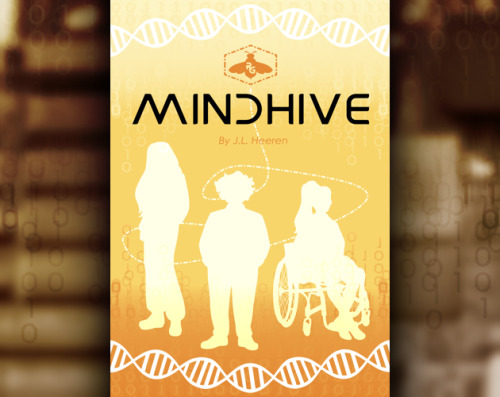
Summary: Dead-broke and dead-set on paying off his student loans before he’s forty, Nathaniel Emersin signed up as a paid test subject for ReGene, a genetics company with a mysterious new invention that they promise will change the world; the Worker Bee Implant.
But Nathaniel has one little secret that didn’t make it onto paper … He’s also been hired by a rival company to sabotage the trial and steal the mysterious new technology that ReGene’s been working on.
(link to WIP intro below)
@gailynovelry: Toybox, psychological horror
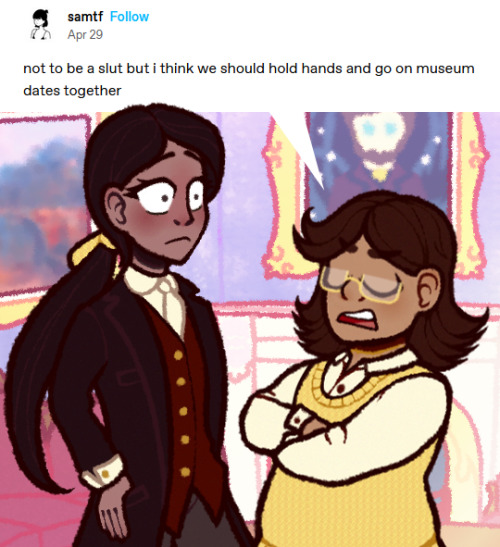
Summary: Eight upcoming episodes of queer psychological horror time loop tragicomedy. Say that five times fast! Or if you want a shorter genre category, it’s a weird fiction visual novel.
A mysterious feyrie figure ushers you into a “play” for their own amusement … and all-too-quickly, you learn that not only is the cast trapped in a timeloop, but the “win” condition for the fey’s “play” involve a fair amount of murder in order for each loop to reset.
Can you help the cast escape their story, or is the playwright always destined to win in the end?
You can read all of the WIP intros here.
@calicojackofficial: The Babysitter’s Here, an adult romance novella.

Summary: Will Moore comes back to his home town four years after running away from home as a teen. He reunites with his siblings and his best friend. But to his surprise his ex-boyfriend Nicky is there to welcome him back too - accompanied by his almost four year old son Seong-Min.
Will is looking for a job back home, thinking about getting his G.E.D., regretting his choices, et cetera. Nicky’s wife offers him a babysitting gig, and despite his better judgement Will takes the job. Seong-Min is just too cute to resist. And there’s a lot of unfinished business between Will and Nicky that Will would like to put to rest, if they can.
Status: 6k words of a goal of 25k, draft #2.
You can see his WIP intro and read an excerpt here. You can sign up for the taglist here.
@calicojackofficial: Curse the Messenger, book one of The Stranger trilogy, a series of adult urban fantasy horror inspired by crime noir.
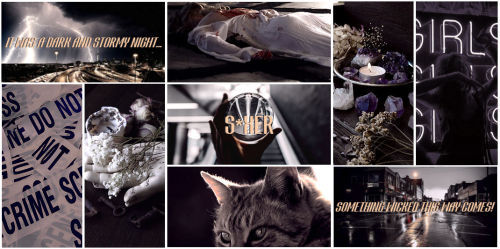
Summary: The main character and 3rd-person narrator of the first book is Eddie Alfaro, a 23 year old Mexican-American lesbian. She is a Seer, which is a type of clairvoyant who has night terror premonitions. Eddie is tormented in her sleep with visions of strangers’ last moments. She has mundane nightmares and sleep paralysis as well, so sometimes it’s difficult to tell what is a premonition and what is just her own subconscious torturing her for the wrongs of her past.
Eddie and her sibling, Fred (27, agender, Scryer), run a small scale private investigation service for other witches - one of the only ways that clairvoyants, who are pariahs in witch society, can make a relatively safe living. They mostly find missing items or curate profiles on people, the same kinds of things that secular P.I.s do but with the added benefit of their powers and the intrigue of their clients’ and targets’.
Then the mysterious Jessica (31, trans lesbian, secular) brings them a murder case. Her ex-girlfriend, Maddie (30, pansexual, Emenant), was brutally murdered. Jessica knows this for certain, she even claims to have seen the crime scene herself before it was cleaned up and there’s no way anyone could survive that kind of carnage. But the secular police are insisting that Maddie is missing, and that they don’t even suspect foul play and aren’t going to look into it.
Despite Fred’s numerous reservations, Eddie makes the executive decision for the both of them to take Jessica’s case and find out what happened to Maddie - and why the police are so sure she’s completely fine despite the gore left in the alleyway she disappeared from.
You can see the WIP Intro here. You can see the character intro for Eddie here. And the character intro for Fred here.
@touchingmadness: Touched, contemporary fantasy
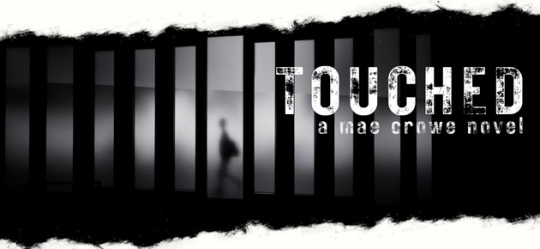
Summary: The Touched are dangerous.
Or at least, that’s what Eris was always taught. It’s not their fault – violence and apathy is simply their nature, and only through rigorous training and careful outside control can they overcome these instincts. Eris was one of the lucky ones, found and whisked away by the Registry at a young age, taught to expel her pent up rage and aggression to defend humanity from her own kind, a perfectly controlled killing machine.
Growing up, all she ever wanted was to be better, to be human and normal. And it’s right there, right around the corner in the form of a nemesis left to die, a job training Touched youth, and an engagement to the Registry Head’s daughter. Her dream is finally within reach… So why does she feel more trapped and alone than ever?
Everything Eris thought she knew about herself, her world, and her desires is falling apart at the seams. And the only one who seems willing to listen is a strangely familiar man who she exchanges numbers with at a Registry party.
Maybe she’s giving in to the darkness, just like they always said she would.
Or maybe she’s just growing up.
Status: Second draft
You can read the full WIP intro and join the taglist here.
@astrophysiciann Mothwing, webcomic

Summary: After a brush with Death (who gives her the mothwing cloak), Mothwing journeys through the land of the Fae in search of the Silver Door, a place that is said to cure all ails and heal all wounds. At its core, Mothwing is about healing from familial trauma, recovering a sense of identity, and learning how to forgive yourself.
Status: As of September 2022, Mothwing is fully outlined and partially scripted, and has undergone some visual development.
You can view the WIP intro here. You can view updates under the tag #mothwing on the artist’s blog.
@open-notebook: Nobody Ends Up Dead in a Bathtub, Everyone Keeps Their Organs, revenge romantic-comedy
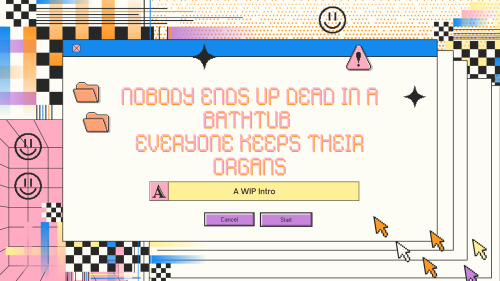
Summary: Alex is a secretary who gets pranked by his co-workers. They set him up on a blind “date” with an escort and sex worker, Damián, thinking it’ll be totally humiliating.
But Damián is nice and needs extra cash to get his brother into grad school. So, he and Alex plot revenge in the form of a fake dating scheme. If they wanted Alex to be embarrassed by going on a date with a sex worker, well, Alex will proudly show off his new boyfriend at the upcoming office party. “Thanks for setting me up with Damián, guys! He’s so smart and kind, and he’s an entrepreneur, as you know.”
And because this is a half-romance story, they end up falling for each other for real. Until shit starts going down, and Alex panics and feels immeasurable guilt over dragging Damián through petty revenge when he’s just trying to do his job.
Status: There is one very rough draft of chapter one posted here.
You can view the WIP Intro and join the taglist here.
@preliminarynori: First Dates and Second Scandals, romance
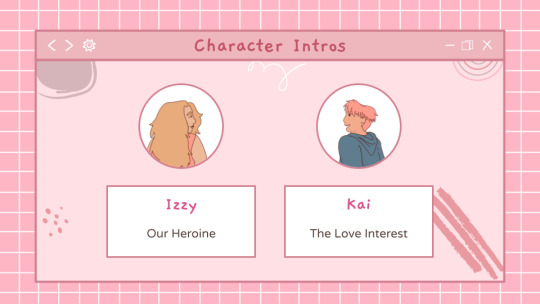
Summary: Izzy was once known as the Pop Princess of LA, but a public breakup and harassment over social media from defensive fans of her ex pushed her into semi-retirement.
Enter Kai, the leader of the internationally beloved boy group NXT. Slowly, he draws her out of her shell and reveals the ugly underbelly of the pop industry in his home country, Cadapor. They start to develop feelings, but a romantic relationship is frowned upon by Kai’s management and Izzy is afraid of facing the same death threats and suicide bait she received years before all because of a summer fling.
First Dates is a somewhat K-pop-inspired romance novel. Rather than really being based on any one idol or group, it’s really inspired by the phenomenon of K-pop—the international adoration and the darker sides of it including toxic fanbases and abusive contracts
Status: This project was part of preliminaroynori’s July 2022 Camp NaNo project. The complete novel can be found on Wattpad and Tapas hopefully by January 2023.
The WIP intro can be found here. And character intros can be found here.
Thank you so much to everyone who contributed their WIP to this post! This blog literally cannot run without authors supporting it and each other. It’s such a big favor to ask people to share their writing projects, but all these lovely people did it! That’s awesome!
Please try to give these authors some love
And if you’re a queer writer who’s interested in being included in the next up-and-coming post, keep an eye on the #call for submissions tag. If this is a moderately successful thing, I will try to do these posts on a regular basis (maybe once every month, two months, or three months).
The Lavender Showcase is a blog dedicated to sharing and cataloging works by queer authors. Check out the blog to find more works or learn how you can be included in the catalog.
27 notes
·
View notes
Text
Mini queer history podcasts
If you want to learn some queer history, but our usual hour-plus episodes are too much for you, check out some of our mini episodes! They’re under half an hour, and feature some fun stories, mini bios, and queer history myth-busting:
Did Queen Victoria believe in lesbians?
Unlike sex between men, sex between women was never illegal in Britain. Was because Queen Victoria refused to believe that it was possible?
Did Swedish people call in gay to work?
We explore the truth behind the story that Swedish people called in gay to work as protest when homosexuality was classified as an illness in Sweden.
Friends of Dorothy
Learn about the phrase "friends of Dorothy", how it baffled the US navy, and what it really means.
Gilbert Baker and the Rainbow Flag
Learn about the origins of the rainbow flag as a symbol of queer pride and community, and the life of its designer, self-described “gay Betsy Ross”, Gilbert Baker.
Pope Joan
Legend has it that in the 9th century, a woman named Joan disguised herself as a man and became the first and only female pope. We explore the truth behind the story, and its place in queer history.
Willem Arondeus
Learn about Dutch World War II resistance fighter Willem Arondeus’ incredibly brave efforts to combat the Nazi regime and the origins of his famous last words.
William Dobell
What does it take for a painting to ruin a friendship, initiate a court case, and change the Australian art world forever? Tune in to this episode on the Australian artist William Dobell and his controversial win of the 1943 Archibald Prize for portraiture to find out!
Wú Zǎo
19th-century Chinese poet and playwright Wú Zǎo wrote queer love poetry, and explored gender through her poetry and plays - as well as discussing the relatable experience of drinking wine while reading sad books.
#queer history#lgbt history#gay history#lgbtq#lgbt#queer#gay#gilbert baker#friends of dorothy#willem arondeus#queer podcasts
84 notes
·
View notes
Note
Uh hey. One of your interests/hypes was ancient female poets? Could you recommend some names or works you found interesting? Sorry I just REALLY like poetry.
OH MY GOODNESS YES OKAY GIMME A MINUTE TO COLLECT MYSELF
..............
My list begins here:
Renèe Vivien- A lesbian poet who was known for her multiple collections of poems, including: A Crown of Violets, The Woman of The Wolf (and other stories), and A Woman Appeared to Me.
Katherine Philips- A wonderfully underrated poet who has been featured in a few separate books about historical poetry, including: The Collected Works of Katherine Philips: The Matchless Orinda, Minor Poets of The Caroline Period (Volume 1), and The Renaissance Poets (Volume 2).
Anna de Noalles- A french poet and a feminist! She only has one collection, and that is: A Life of Poems, Poems of a Life.
Natalie Clifford Barney- One of Vivien's lovers, actually! She was a playwright and a novelist, generally speaking, but she does have one collection of poems: Poems & Poems; autres alliances.
Elizabeth Barrett Browning- A victorian poet, personally I don't enjoy her work very much (no real reason.. it just doesn't hit quite right). But she has several, and I mean SEVERAL works. Notable ones are: Sonnets From the Portuguese, and Aurora Leigh. Many of the others are just titled "Poems" but the volumes do not align with the times they were published (volume 2 was published ten years before volume 1??? And other weird things) so I'll let you sort that out if you're really interested.
I saved the best for last:
Phillis Wheatley (or Phyllis Wheatly)- The very first black woman author of a published book of poetry in the USA(according to what I've read, if anyone else does more research and finds out this is incorrect, please let me know). Her published book (1773) is Poems on Various Subjects: Religious and Moral, and there are several modern collections that have been published over the years.
..............
I hope these were helpful!! I can 100% find some more for you if you'd like, thank you for indulging me!! Poetry is one of my favorite forms of literature and I'm always looking for an opportunity to talk about it with other people that find it interesting.. You've truly made my night :)
#hopefully the read more banner worked#if not I'll feel stupid#poetry#female poets#lesbian#lesbiansafe#bambi lesbian#sappho#bambi lesbian posts#wlw#literature#ancient female poets and historical literature
25 notes
·
View notes
Photo




#VoicesfromtheStacks
Gertrude Stein :Camera Work & Tender Buttons
Gertrude Stein (February 3, 1874 – July 27, 1946) was an American novelist, poet, playwright, and art collector.
Her most well known books include Q.E.D., about a lesbian romantic affair, one of the first coming out stories; Fernhurst, Three Lives, The Making of Americans, as well as Tender Buttons, pictured here.
Inspired by the Cubist movement, this book from 1914 shows Stein writing abstract poems using not only descriptions of objects, but also sequences of sounds to create a verbal image of an object. The poems are listed under the three subheadings of Objects, Food and Rooms. While many critics find the poems too fragmented and dense to be comprehensible, Stein was quoted in saying that this work was completely "realistic" in the tradition of Gustave Flaubert. "I used to take objects on a table, like a tumbler or any kind of object and try to get the picture of it clear and separate in my mind and create a word relationship between the word and the things seen."
Two quotes from her works that have become widely know today: "Rose is a rose is a rose is a rose," and "there is no there there".
She was friends with many of the other influential writers and artists of the time, and hosted “The Stein salon” in her Paris home, where many of these figures, such as Pablo Picasso, Ernest Hemingway, F. Scott Fitzgerald, and Sinclair Lewis would gather.
Picasso and other artists would paint or sculpt portraits of Stein, who in turn would often return the favor by painting a verbal portrait of the artists in various publications, such as her articles on Matisse and Picasso in the special 1912 edition of Camera Work. You can see this edition of Camera Work, as well as the whole run of the publication, at Special Collections.
32 notes
·
View notes
Text
The Mechanisms as Random Birds I Found on the Internet
Did anyone want this? No. Do I know anything about birds? Also no. Anyways, here’s a shitpost I spent way too long on.
Jonny d’Ville: Northern Mockingbird
First and foremost, here’s Jonny! An asshole! A bastard! An all around terrible person! He shall be a northern mockingbird. This fucking bird has no redeemable qualities other than that it is pretty and a GREAT singer. This is a very aggressive bird. Very territorial. If it had opposable thumbs, it would probably shoot you in like the foot or something. I don’t think these birds are very smart. Just like a certain “captain” that we know. The state bird of Texas, among all places. Never trust a texas. In true Texas fashion, the 1927 legislation declaring the Northern Mockingbird the state’s official bird stated that the species is “a fighter for the protection of his home, falling, if need be, in its defence, like any true texan.” Now Jonny burned down a Texas - maybe not this Texas but whatever. I read somewhere that a mockingbird could peck someone’s dick off, and honestly? Valid.
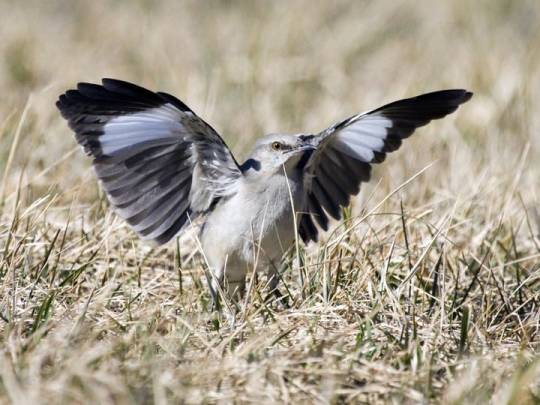
Gunpowder Tim: Southern Cassowary
Okay, hear me out. This bird is a little bitch - or rather a b i g bitch. In a good way. Look at this fucking bird. It’s majestic. Doesn’t it look just SO trustworthy. What a trustworthy man. And very pretty. Pretty, pretty bird. Who could squash you like a fucking ant. This is one Violent bird. Tim is one Violent person. The cassowary makes a low roaring sound like a fucking dinosaur. I love dinosaurs. DID I MENTION IT LAYS GREEN EGGS. Now you might say, well Tim is a human and humans don’t lay green eggs. Fuck you. It’s never explicitly stated that our very own Gunpowder Tim doesn’t lay green eggs. Also comes with a built-in helmet. As everyone except Tim and the southern cassowary says, safety first! Strikes me as a very egotistical bird. If the cassowary weren’t a bird, I don’t think it would wear a seatbelt.
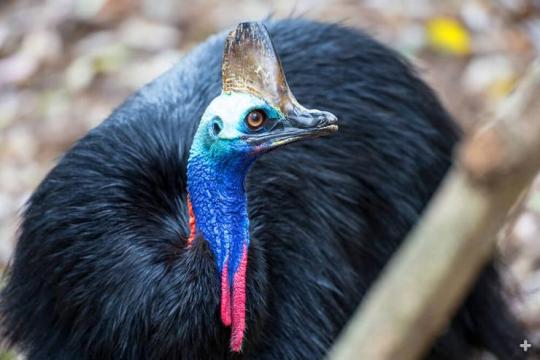
Ashes O’Reilly: California Condor
Okay, so. This is a cool fucking bird. Just look at it. M a j e s t i c. Do you know who else is really fucking cool? Ashes. They have so much power. Also condors are beautiful birds. Oh my god. California condors are very graceful fliers. For Ashes, I almost went with the brown falcon - one of “Nature’s arsonists”, but other than arson, it’s a rather boring bird. Just brown. And a falcon. BUT THE CALIFORNIA CONDOR. Now that’s a cool bird. The god of the sky. Actually, in the “research” for this post I found a blog post in 2011 from someone who has genuinely worshipped condors as gods since they were a teenager and honestly? Valid. (disclaimer; I am aware that many native cultures worship animals and nature, however I don’t feel qualified to talk about that. I don’t mean any harm by this post.)
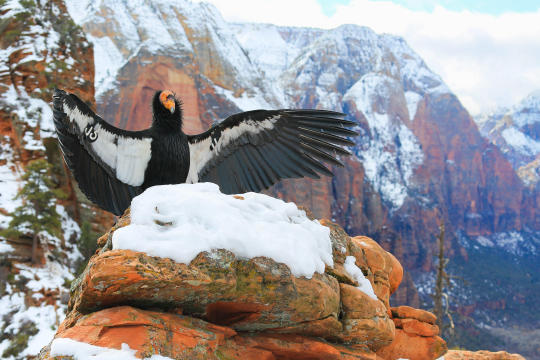
DrumBot Brian: Shoebill Stork
Well. I did have a rather difficult time finding a bird that has a complex set of moral values. Who would’ve thought?? I did almost use a praying mantis, just for a little variety. I’ve never met someone who wouldn’t rip off the head of their lover. BUT ANYWAYS. Here we have Brian the Shoebill Stork. He looks so nice. But he will not hesitate to decapitate your baby crocodile. Also very patient!! Like a dinosaur! This bird has the most complex set of moral values of any bird I could find in about thirty seconds. If Brian didn’t decapitate so many young crocodiles there would be much too many! Too many crocodiles! The horror! I’ve also seen a gif of Boring Brian delicately picking up a duckling and placing it back down. Dunno what happened after, though. Don’t ask. Apparently the shoebill stork makes “machine-gun noises” which I think Jonny would enjoy fucking around with. A place that I forgot to write down reportedly called the bird “Abu-Markhub” meaning “father of the slipper” which,,,, yeah.

Raphaella la Cognizi: Kea
Also known as the “clown of the alps”, the Kea resides in the mountains, as the only alpine parrot. Pretty cool. I want to be a clown. But like, a cool clown - not one that hides in a sewer and eats children… Anyways, I’m getting off topic. The kea is the smartest bird I could find. Raphaella is the science officer of the Aurora so it seemed fitting. Look at this photo. That’s science at work! Kea can use basic tools! And reportedly have the intelligence of a four-year-old child! That’s pretty smart! Also it has wings! Raph has wings! Apparently kea enjoy attacking sheep, dogs, horses, etc. and just generally fuck around with people. Imagine what this bird could do with opposable thumbs…
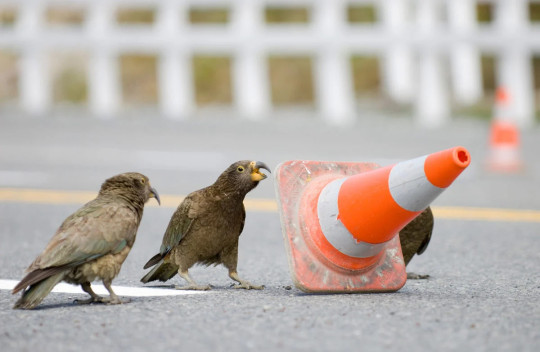
Marius von Raum: Victoria Crowned Pigeon
My criteria for Bird Marius was essentially a stupid looking bird with a ridiculously long name. I was originally going to go with the King of Saxony Bird of Paradise solely for the name (just look at it! It’s so dumb! Who the fuck is the king of saxony!) however it bored me. So! Here we have Doctor Baron Marius von Raum as the Victoria Crowned Pigeon (also sometimes referred to as the Blue Crowned Pigeon). Genuinely, this was my favourite bird as a child. I fucking love this funky little bastard. Apparently, it’s the largest pigeon species in the world and can grow to be the size of a turkey. A turkey! What the fuck! This bird thinks it’s all that. (I mean, it’s not wrong). It was named after Queen Victoria but like,,,,, Fuck The Monarchy. Also eats a lot of figs. The bird - not the queen. Or maybe the queen I dunno. Marius seems like the kind of person who hates figs but eats them anyways so he doesn’t feel inferior to the Fig Lord. How the fuck is this bird not extinct yet.

Ivy Alexandria: Common Raven
Ivy Alexandria, the Common Raven. Ravens are extremely smart! Like seriously - near where I live, there’s an animal shelter with a raven and you can hold a conversation with it. It’s amazing! They also have great memories and hold grudges - so don’t mess with them. Oh! They can also use hand gestures, which for birds is insanely cool! They are the literal “birdbrain”. Sometimes they collect little trinkets, which I think is really sweet. Now, I don’t believe ravens can read but like,,,,, I dunno. I read an article recently about ravens doing “weird things with ants”. Apparently they like to play with them. Ravens have been known to sit in an anthill and let ants crawl all over their feathers for no apparent reason. Now, while nothing has been canonically stated involving Ivy and ants, you can’t prove Ivy doesn’t go sit and hang out with a bunch of ants.
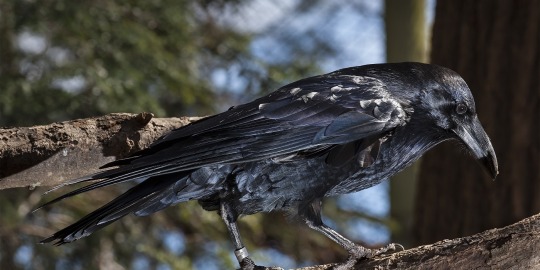
Nastya Rasputina: Andean Potoo
The Andean Potoo is the most mysterious breed of the seven or so potoo species; almost nothing is known other than their vague appearance and their stomach contents (large insects like beetles and grasshoppers, if you were interested). While we do know quite a bit about Nastya, I thought this bird fit her pretty well. In answer to the question “Are potoos friendly?” a website said: “The short answer is ‘no’. The slightly longer answer is ‘it depends’.” This sounds like Nastya and her lesbian spaceship girlfriend. Potoos are VERY good at camouflage; like Nastya in Aurora’s veins?? I dunno, might be a bit of a stretch. They are shy, secretive birds. Sounds fun. Potoos are also VERY good at catching insects and shit. This point might not be relevant, but whatever. Andean potoos might mate for life; scientists don’t know. Let’s say that they do. If Nastya were this bird, she could be eaten by a weasel. Weasels said fuck Nastya rights. Fuck weasels.
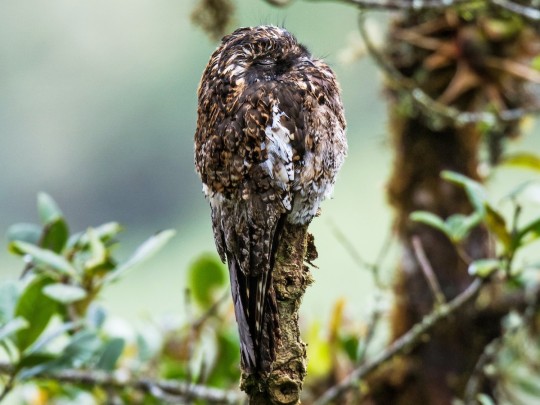
The Toy Soldier: Atlantic Puffin
OH MY GOD. I love the Toy Soldier. The Atlantic Puffin. I don’t have many reasons for this one other that IT’S ADORABLE. This is my favourite bird. Just look at it!!! Hnnnnnnn. Baby puffins are called pufflingssssss. Oh my god. Also look up the bird call of the atlantic puffin; it is the best thing ever. Puffins are very sociable birds and live in like giant flocks or something. They’re very neat birds and also waterproof! Like wood! They shed the outer layer of their beaks once a year! Like wood! They live in burrows! Like wood! They can hold a fuck ton of fish in their beaks! Like wood! They have a really fucking wierd tongue! Like wood!

BONUS: Dr. Carmilla: Lammergier (Bearded Vulture)
Do I know anything about Dr. Carmilla? Nope! I think she’s a vampire but like???? Anyways, just look at this bird. It’s pretty self-explanatory. The Lammergeier is one Badass Bird. It is one of the largest old-world vultures. I don’t know what that means. It can grow up to four feet tall, though! And has a wingspan between seven and nine feet. That’s a big fucking bird! They have no natural predators, much like a certain immortal vampire (maybe???). It eats primarily bone and bone marrow and has a nasty habit of carrying off lambs, calves, and dead children. Remind you of the Good Doctor and her Band? Probably not. I bet Jonny has eaten at least one dead child, though. The lammergeier can also live up to the ripe old age of 45 (old in bird years?). Supposedly a lammergeier killed the greek playwright Aeschelus by mistaking his large bald head for a rock and dropping a turtle on it. Sounds very Carmilla. BUT WAIT I HAVEN’T GOTTEN TO THE BEST PART. This bird dies it’s fur the colour of blood to look more intimidating! Supposedly this is a mark of status, as well. That’s one badass bird!!!
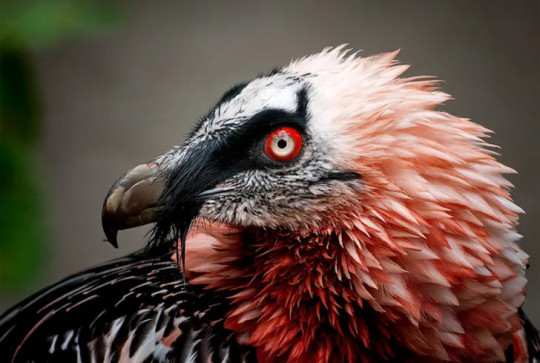
WELL THAT WAS AN ADVENTURE. A useless adventure, sure. Fuck you. I had fun.
#the mechanisms#jonny d'ville#gunpowder tim#ashes o'rielly#drumbot brian#raphaella la cognizi#ivy alexandria#marius von raum#nastya rasputina#the toy soldier#dr carmilla??#birds???#i dont know what the Fuck this is
56 notes
·
View notes
Photo
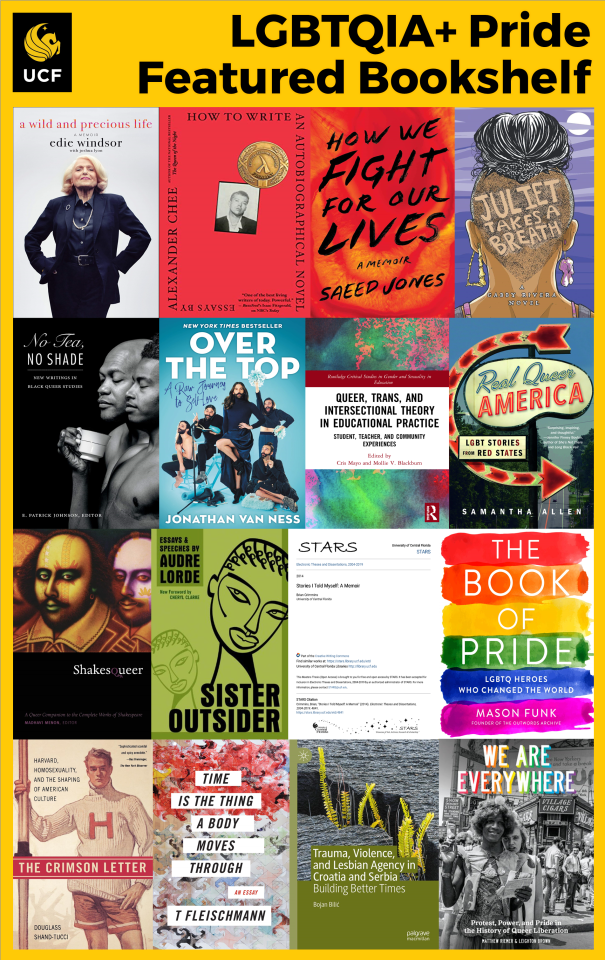
Ready to fly your flag?
Pride Month has arrived! While every day is a time to be proud of your identity and orientation, June is that extra special time for boldly celebrating with and for the LGBTQIA community (yes, there are more than lesbian, gay, bisexual, and transgender in the queer community). June was chosen to honor the Stonewall Riots which happened in 1969. Like other celebratory months, LGBT Pride Month started as a weeklong series of events and expanded into a full month of festivities.
In honor of Pride Month, UCF Library faculty and staff suggested books from the UCF collection that represent a wide array of queer authors and characters. Click on the read more link below to see the full list, descriptions, and catalog links.
With the Libraries’ on remote resource access, the usual extended physical display isn’t available so we have created a list of ebooks and streaming videos that you can access from the comfort of your home.
A Wild and Precious Life: a memoir by Edie Windsor A lively, intimate memoir from an icon of the gay rights movement, describing gay life in 1950s and 60s New York City and her longtime activism which opened the door for marriage equality. Edie Windsor became internationally famous when she sued the US government, seeking federal recognition for her marriage to Thea Spyer, her partner of more than four decades. The Supreme Court ruled in Edie's favor, a landmark victory that set the stage for full marriage equality in the US. Beloved by the LGBTQ community, Edie embraced her new role as an icon; she had already been living an extraordinary and groundbreaking life for decades. Suggested by Kelly Young, Administration
How We Fight for Our Lives: a memoir by Saeed Jones Haunted and haunting, Jones's memoir tells the story of a young, black, gay man from the South as he fights to carve out a place for himself, within his family, within his country, within his own hopes, desires, and fears. Through a series of vignettes that chart a course across the American landscape, Jones draws readers into his boyhood and adolescence--into tumultuous relationships with his mother and grandmother, into passing flings with lovers, friends and strangers. Each piece builds into a larger examination of race and queerness, power and vulnerability, love and grief: a portrait of what we all do for one another--and to one another--as we fight to become ourselves. Suggested by Sandy Avila, Research & Information Services
How to Write an Autobiographical Novel: essays by Alexander Chee Chee’s manifesto on the entangling of life, literature, and politics, and how the lessons learned from a life spent reading and writing fiction have changed him. In these essays, he grows from student to teacher, reader to writer, and reckons with his identities as a son, a gay man, a Korean American, an artist, an activist, a lover, and a friend. He examines some of the most formative experiences of his life and the nation's history, including his father's death, the AIDS crisis, 9/11, the jobs that supported his writing--Tarot-reading, bookselling, cater-waiting for William F. Buckley—the writing of his first novel, Edinburgh, and the election of Donald Trump. Suggested by Sara Duff, Acquisitions & Collections
Juliet Takes a Breath by Gabby Rivera Juliet Milagros Palante is leaving the Bronx and headed to Portland, Oregon. She just came out to her family and isn't sure if her mom will ever speak to her again. But Juliet has a plan, sort of, one that's going to help her figure out this whole "Puerto Rican lesbian" thing. She's interning with the author of her favorite book: Harlowe Brisbane, the ultimate authority on feminism, women's bodies, and other gay-sounding stuff. With more questions than answers, Juliet takes on Portland, Harlowe, and most importantly, herself. Suggested by Sara Duff, Acquisitions & Collections
No Tea, No Shade: new writings in Black queer studies edited by E. Patrick Johnson This book brings together nineteen essays from the next generation of black queer studies scholars, activists, and community leaders who build on the foundational work of black queer studies, pushing the field in new and exciting directions. Suggested by Jada Reyes, Research & Information Services
Over the Top: a raw journey to self-love by Jonathan Van Ness Before he stole our hearts as the grooming and self-care expert on Netflix’s hit show Queer Eye, Jonathan was growing up in a small Midwestern town that didn’t understand why he was so…over the top. From choreographed carpet figure skating routines to the unavoidable fact that he was Just. So. Gay., Jonathan was an easy target and endured years of judgement, ridicule and trauma—yet none of it crushed his uniquely effervescent spirit. You’ll laugh, you’ll cry, and you’ll come away knowing that no matter how broken or lost you may be, you’re a Kelly Clarkson song, you’re strong, and you’ve got this. Suggested by Kelly Young, Administration
Queer, Trans, and Intersectional Theory in Educational Practice: student, teacher, and community experiences edited by Cris Mayo and Mollie V. Blackburn Queer theory, trans theory, and intersectional theory have all sought to describe, create, and foster a sense of complex subjectivity and community, insisting on relationality and complexity as concepts and communities shift and change. This collection brings these crucial theories together to inform pedagogies across a wide array of contexts of formal education and community-based educational settings. Suggested by Anna Dvorecky, Cataloging
Real Queer America: LGBT stories from red states by Samantha Allen Allen takes us on a cross-country road-trip stretching all the way from Provo, Utah to the Rio Grande Valley to the Bible Belt to the Deep South. Her motto for the trip: "Something gay every day." Making pit stops at drag shows, political rallies, and hubs of queer life across the heartland, she introduces us to scores of extraordinary LGBT people working for change, from the first openly transgender mayor in Texas history to the manager of the only queer night club in Bloomington, Indiana, and many more. Suggested by Sandy Avila, Research & Information Services
Shakesqueer: a queer companion to the complete works of Shakespeare edited by Madhavi Menon Exploring what is odd, eccentric, and unexpected in the Bard’s plays and poems, these theorists highlight not only the many ways that Shakespeare can be queered but also the many ways that Shakespeare can enrich queer theory. This innovative anthology reveals an early modern playwright insistently returning to questions of language, identity, and temporality, themes central to contemporary queer theory. Chasing all manner of stray desires through every one of Shakespeare’s plays and poems, the contributors cross temporal, animal, theoretical, and sexual boundaries with abandon. Together they expand the reach of queerness and queer critique across chronologies, methodologies, and bodies. Suggested by Megan Haught, Teaching & Engagement/Research & Information Services
Sister Outsider: essays and speeches by Audre Lorde In this charged collection of fifteen essays and speeches, Lorde takes on sexism, racism, ageism, homophobia, and class, and propounds social difference as a vehicle for action and change. Her prose is incisive, unflinching, and lyrical, reflecting struggle but ultimately offering messages of hope. This commemorative edition includes a new foreword by Lorde-scholar and poet Cheryl Clarke, who celebrates the ways in which Lorde's philosophies resonate more than twenty years after they were first published. Suggested by Jada Reyes, Research & Information Services
Stories I Told Myself: a memoir by Brian D. Crimmins (UCF Thesis) Stories I Told Myself: A Memoir explores the experience of growing up gay in the 1980s. It is one boy's journey toward self-acceptance set against the conservative backdrop of a rural community on California's central coast. The story illuminates the hunger for a life different than the one being lived, and the ever-present sense of being different exacerbated by bullying and unrequited love. It is a narrative of evolving identity, and includes cultural insights and societal context of the time period. The author poses a fundamental question, "How did I make it out of the 80's alive?" and he explores the answer with poignant humor and self-examination. Suggested by Megan Haught, Teaching & Engagement/Research & Information Services
The Book of Pride: LGBTQ heroes who changed the world by Mason Funk Captures the true story of the LGBTQ civil rights movement from the 1960s to the present through richly detailed, stunning interviews with the leaders, activists, and ordinary people who witnessed the revolution and made it happen. Suggested by Megan Haught, Teaching & Engagement/Research & Information Services
The Crimson Letter: Harvard, homosexuality, and the shaping of American culture by Douglas Shand-Tucci Historian Douglass Shand-Tucci explores the nature and expression of sexual identity at America's oldest university during the years of its greatest influence. The Crimson Letter follows the gay experience at Harvard in the nineteenth and twentieth centuries, focusing upon students, faculty, alumni, and hangers-on who struggled to find their place within the confines of Harvard Yard and in the society outside. Suggested by Pat Tiberii, Interlibrary Loan & Document Delivery Services
Time is the Thing a Body Moves Through by T Fleischmann Sebald meets Maggie Nelson in this autobiographical narrative of embodiment, visual art, history, and loss. T Fleischmann uses Felix Gonzales-Torres's artworks--piles of candy, stacks of paper, puzzles--as a path through questions of love and loss, violence and rejuvenation, gender and sexuality. From the back porches of Buffalo, to the galleries of New York and L.A., to farmhouses of rural Tennessee, the artworks act as still points, sites for reflection situated in lived experience. Suggested by Sara Duff, Acquisitions & Collections
Trauma, Violence, and Lesbian Agency in Croatia and Serbia: building better times by Bojan Bilić This book uncovers some of the major moments in the fragile and still poorly known herstory of feminist lesbian engagement in Serbia and Croatia. By treating the trauma of war, homophobia, and neoliberal capitalism as a verbally impenetrable experience that longs to be narrated, this monograph explores the ways in which feminist lesbian language has repeatedly emerged in the context of strong patriarchal silencing that has surrounded the armed conflicts of the Yugoslav succession. The book renders visible a surprising diversity of activist initiatives and the resilience of transnational affective ties, which testify to the creativity of lesbian activist mobilizations in the ambivalent semi-peripheral space that used to be Yugoslavia. Suggested by Anna Dvorecky, Cataloging
We Are Everywhere: protest, power, and pride in the history of Queer Liberation by Matthew Riemer and Leighton Brown Have pride in history. Through the lenses of protest, power, and pride, this is an essential overview -- and a visual record -- of the history of the Queer Liberation Movement in the United States. With exhaustively researched narrative and hundreds of stunning photographs, this sweeping book traces queer activism from its roots in the late-nineteenth-century -- long before the pivotal Stonewall Riots of 1969 -- to today, casting new light on many of the movement's trailblazing activists and organizations. Suggested by Christina Wray, Student Learning & Engagement
16 notes
·
View notes
Link
“A new Hindi-language, coming-of-age romantic comedy is making waves and disrupting heteronormative cinema in India this year. Ek Ladki Ko Dekha Toh Aisa Laga, which translates to “How I Felt When I Saw That Girl,” is the first Bollywood movie to portray a lesbian love story—or any LGBTQ story, for that matter—in a meaningful way. Unfortunately, despite having encouraging reviews from Indian film critics, Indian cinema-goers aren’t exactly flocking to see it.
According to the filmmakers, the movie is performing better overseas than back in India, where a landmark ruling legalized gay sex in September 2018 and the country’s movie industry is having its own #MeToo conversation (speaking of which, the film dropped veteran Bollywood filmmaker Rajkumar Hirani’s credits as a co-producer on Ek Ladki in the wake of sexual assault allegations against him).
Nonetheless, it’s a major breakthrough in an industry that up until now has only portrayed queer folks as comedic material.
As for the quality of Ek Ladki, it’s as wildly entertaining as one would come to expect from a Bollywood movie, where characters regularly break out in song and dance. It’s hilarious, too. In it, Bollywood superstar Sonam Kapoor stars as Sweety, a young Indian woman with a secret that she’s afraid to tell her father (played by her actual father, fellow Bollywood superstar, Anil Kapoor)—that contrary to her family’s wishes, she does not want to marry a man. Spoiler: She’s in love with a woman and has loved women her entire life, though it’s only within the past year that she’s begun to find self-acceptance with her lesbian identity.
Her father, meanwhile, has his own progressive storyline that suggests the filmmakers are also speaking to gender norms—to the dismay of his mother, his passion is to cook. The action kicks into gear when Sweety crosses paths with Sahil, a Muslim-Indian filmmaker and aspiring playwright played by Rajkummar Rao. Smitten by this mysterious woman he’s just met, Sahil hatches a plan to host an acting class in Sweety’s small town to win her over. Little does he know....”
Broadly caught up with Chopra Dhar in New York City for a conversation on LGBTQ representation in Bollywood, her advice to fellow parents, and why you shouldn’t let age stop you from following your dreams.”
Read the interview here
youtube
#bollywood#lgbt india#lgbtq india#india lgbt#india lgbtq#lgbt movie#lgbt movies#lgbtq movie#lgbtq movies#lgbt representation
347 notes
·
View notes
Text
A School Project as an Ode to Larry Kramer --32 Million and Counting
TLDR; This speech was a project for a Queer Studies class that I participated in. It is a speech in the form of Larry Kramer’s speech about AIDS activism in 1983 called “1,112 and Counting” I also wanted to bring into awareness what has changed in the 37 years since his original speech. The audience is meant to be the queer community, just like his was, but also to be open to those that would listen. Due to its nature, it encompasses public health, politics, humanity, and activism. I didn’t intend for this to be the case but as the project progressed we were diagnosed to be going through a pandemic much like that of what those in the 80s experienced. To this degree, I didn’t mean to scare but frustrate the reader, much like Larry Kramer. I wanted my speech to be uniquely mine, but be reminiscent of the effect that he garnered. I plan to post this to my Tumblrs LGBTQueeries and the-unending-kerfuffle as well as my Instagram @one_steph_from_death. I want to place this speech out into the world. Please feel free to reblog and share and comment and chat with me in the comments!
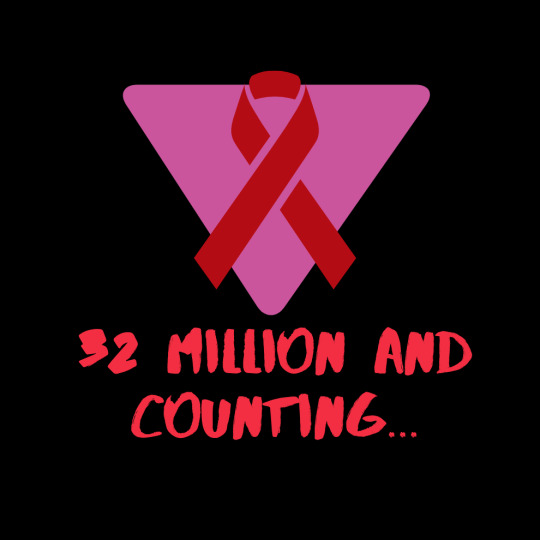
Larry Kramer started his count when the number was 1,112 and counting. In 1983. Think about that again. In 1983. Thirty-seven years ago. He screamed for help then, knowing full well we’d be obliterated as a group unless we stood up. He refused to be forced to die.
To frame this, a former entertainment star had been elected to the most powerful political seat in government. His staunch political and religious opinions led to the death of innocent people. He could have saved them by using his voice and asserting a need for research, laws, and education, but instead, let them die impoverished and discriminated against. If the hate and violent crimes didn’t get them, the sickness creeping in would.
Worst of all, as a community, we knew that he didn’t speak for us. We knew that this hate would kill us, yet we still remain silent. We remained silent as the hate trickled into the deepest pores of our community. We let the hate fester, building up and attaching to the difference among us until it finally separated us and dismantled us. We let the bigotry we so desperately try to run from infiltrate our ranks and break us apart into factions.
They were treated like lepers and untouchables (Barker & Cran, 2006). Hospital workers were nearly absent, just present enough to not be liable for neglect. Visitors were few and gay lovers, if they stayed, were sent away. Imagine that, slipping away in pain as you lose your vision and ability to breathe, your body starts deteriorating as it is filled with cancer and opportunistic infections. Alone. All alone.
And when you (inevitably) died your casket wasn’t lined in silk with cushions and roses. Yours was lined with plastic and biohazard material. Your brittle, thin body was crumpled up in the discarded sheets and hospital gowns and thrown into a garbage bag. No one was going to claim you, so no point in going to the morgue. Your toes, if you still had them, weren’t tagged, just set aside with all your other hospital belongings.
But the pain didn’t end there. Like the weekly garbage men, bags were taken to empty spaces and distributed into large, unmarked graves (Kilgannon. 2018). A secluded hole lost to history. A supposed bygone of the middle ages, but here to dispose of Jane and John Does.
If I was to scream like Larry Kramer, to these separated groups, I’d go hoarse within hours. As of 2018, 35 years after his speech, we have lost 32 million people to HIV/AIDS (CDC, 2020). That doesn’t include the people from the last 2 years.
We lost 32 million innocent people.
Yes, we lost gay men and IV drug users but they are still human. They still had the same dreams and aspirations as everyone else. They could have lived to be designers and playwrights just as well as becoming doctors and lawyers. We lost everyone one from, every walk of life. We lost painters, poets, magicians, musicians, surgeons, dentists, lawyers, physicians, firefighters, police officers, farmers, framers, parents, children. Their blood is on the hands of those that slowly took the life from them. The government is not free from their crimes.
But honestly, that’s not where the frustration and anger ends. Our history is being erased. Purposefully and eagerly. This situation that I’ve laid before your eyes seems to be that of 1983 and the pain of Ronald Reagan. The horror sounds painfully identical to what we deal with today.
Our current administration has continued some of these misinformed ideas and hateful actions. The Ryan White Fund, a fund specifically created to create a money source for HIV/AIDS research and treatment have received cutbacks and other plans set in motion like PEPFAR aren’t fairing well either. They are better in this term than in the past, but frankly, that’s not too comforting. This fund was the lifeblood for many organizations and they soon will be bled dry (Forsyth, n.d.). This does not take into account the other actions towards queer people in general. This takes into account only one facet of the government that is working against us. What about the judicial branch and the possibility to be tried for attempted murder for not disclosing your status to your partner (CDC, 2019)? It’s not like you have to do the same for other STIs. “On the count of giving chlamydia to your partner without disclosing your last date of testing, how does the jury find the defendant?” This doesn’t take into account the possibility you didn’t know of your own status.
And what if you wished to give blood? Say you’re gay and we’ll even go so far as saying you’re HIV-. They’d turn you away. They’d send you back for 12 months for not being able to prove you didn’t have sex with your male partner for 12+ months. May I remind you that lesbians and heterosexual men and women have gotten HIV and therefore can pass it along? This is possibly a law of Reagan’s 80s, but it’s still in effect TODAY (“LGBTQ Donors”, n.d.).
But I digress. The government is still not free from their crimes and institutionalized hate. I don’t wish to get too political but it is inevitable with the fact we’re all stuck in the past. Again, it’s not where my frustration lies.
My frustration is formed in the same disappointment that Larry Kramer had. In 37 years not much has changed and that the voice that we have as a community. We gained it with protests through organizations like ACT UP but we’ve apparently been diagnosed with laryngitis because we’ve become oddly silent. HIV/AIDS is not a disease of history. We haven’t cured the earth of this disease. It’s here and stuck to us like your legs to a hot vinyl seat. It affects everyone and intersectionality can increase your risk (CDC, 2019). There’s a reason it’s no longer called “Gay Related Immune Disease”. Yet where the hell are we?
It affects the young and the old. Yet we remain silent, pretending it’s not occurring.
We can blame it on the straight, cis majority but we are complicit in our own erasure, assimilation, and silencing.
We let our history fall by the wayside and be covered up with rainbows and pride flags used by businesses in marketing. We let our history be encapsulated by a month handed to us by the majority.
We let the atrocities that happened be forgotten along with many of the names.
We isolate those now that are HIV+ from queer-friendly functions, both blatantly and subtlely.
But most importantly we lost our gusto to fight for a better future for the generations that come after us. That’s what stings the most.
It’s important to remember that this disease is no longer a death sentence. You no longer have to feel the weight of shackles weighing you down towards the underworld. Provided, that is, you have insurance and can pay for your medications. But that is another government issue for another speech. With one pill a day, just like your Flintstones vitamins, you can live a normal life. You can date and with proper precautions, have sex and not pass it along to your partner. Undetectable = Untransmissable (UNAIDS, 2018).
While this may be a reality for us in our modern-day. I refuse to let those that sacrificed themselves for this cause be forgotten. We lost 32 million people and while I can’t list them all here or scream them to the heavens, I’ll damn well try. Those that came before us, despite their flaws, paved the way for us and I refuse to let them slip away because our government doesn’t like it. Join me in sharing the stories. If you want to see face to face, the humans that we lost, follow accounts like @theaidsmemorial on Instagram. End our silence. If it’s painful for you, imagine how it must feel for the friends and families of those that lost someone of the 32 million. They need your help to speak up.
We started this with 1,112 and counting. Now we’re at 32 million and counting. Let’s end the counting and start the protesting.
Works Cited
Barker, G., & Cran, W. (2006, May 30). Retrieved from https://www.pbs.org/wgbh/frontline/film/aids/
Centers for Disease Control. (2020, January 16). U.S. Statistics. Retrieved from https://www.hiv.gov/hiv-basics/overview/data-and-trends/statistics
Forsyth, A. D. (n.d.). Powerpoint presentation.
HIV and STD Criminal Laws. (2019, July 1). Retrieved from https://www.cdc.gov/hiv/policies/law/states/exposure.html
HIV by Group. (2019, October 25). Retrieved from https://www.cdc.gov/hiv/group/index.html
Kilgannon, C. (2018, July 3). Dead of AIDS and Forgotten in Potter's Field. Retrieved from https://www.nytimes.com/2018/07/03/nyregion/hart-island-aids-new-york.html
LGBTQ Donors. (n.d.). Retrieved from https://www.redcrossblood.org/donate-blood/how-to-donate/eligibility-requirements/lgbtq-donors.html
UNAIDS Explainer. (2018). UNAIDS Explainer. Retrieved from https://www.unaids.org/sites/default/files/media_asset/undetectable-untransmittable_en.pdf
#lgbtq#lgbtq community#lgbtpride#lgbt history#AIDS crisis#hiv aids#Larry Kramer#ACTUP#activism#school#project#coronovirus#horror#EJAF#Mercury Phoenix Trust#red ribbon#discrimination#lgbt rights#call to action#queer#queer pride#hiv/aids#ERASED HISTORY#history#protest
5 notes
·
View notes
Text
Girl, Woman, Other. Bernadine Evaristo.
This review is also featured here on Goodreads.
Girl, Woman, Other sees Bernadine Evaristo take us through the ever-changing landscape of what it means to be just that: a girl, a woman, other. With the added twist that all of her characters are also black. Evaristo has a fantastic talent for creating characters that appear to leap out of the page and start gesticulating at you, reprimanding you for your totally not woke political opinions. She makes some bold stylistic choices here, choosing to omit speech marks and full stops from her prose. Whilst this is initially rather disconcerting, it adds a beautiful layer of poeticism to her writing and I found myself wanting to experiment myself with a lack of speech marks in my own writing. This novel has a lot going for it; the prose is engaging; I was able to see a spectrum of black female/other lives in one place in a way I have never seen before. From my perspective, while I don’t feel Evaristo necessarily raised a lot of issues beyond the obvious (racism), I was taken out of my comfort zone as I would not usually ever reach for a narrative about someone born long before myself (I usually find this very boring). However, Evaristo narrates a striking picture not only of how far we have come as a society and a people, but also how far we still have to go in terms of tackling societal inequalities. A novel lacking much in the way of plot, Girl, Woman, Other. is necessarily character driven, and most of Evaristo’s characters are eccentric, whimsical fusspots with difficult backstories. Of these, my favourites are Amma, Morgan, Hattie and Shirley. For me, these characters were most interesting because they represented something I had never before interacted with in a contemporary narrative. Amma is a polyamorous, middle-aged, lesbian playwright, Morgan a gender-free trans activist, Hattie a weathered old battleaxe living on the border of Scotland and Shirley a fastidious, cripplingly boring schoolteacher (while this does not sound appealing on the surface, it is in essence her dullness that makes Shirley so interesting). Evaristo takes us through their lives, what led them to become the people they are, their personal struggles and failures, their drives and motivators. While all of these women (and other) are black, this does not then imply uniformity of experience; Hattie had a enormously different time of growing up near Newcastle in the 1940s to Shirley, who was raised in the heart of Peckham thirty years later. Especially of import to me was Morgan, who shed light on what it means to be trans and non-dysphoric, something I had never really been able to comprehend before. For me, the release of this novel as a collection of short stories represents the growing intersections and intricacies of being a black woman in the UK; a well-written and welcome exploration. The satisfying conclusion of the novel ties all of the characters together whilst also being emotional enough to make me cry myself to sleep. I highly recommend reading it no matter your background. That being said, while I think that this is a revolutionary novel, there were some things that did not really work for me. I believe that Evaristo has much more success writing older characters than her younger ones, who lay a little flat for me. The sections from Amma’s daughter Yazz’s point of view vexed me; while she is my age, to me she seemed excessively immature, annoying and cringey running around calling her group of friends squad and carrying out her own little disempowerment Olympics. The friends in question also appeared to have little chemistry and it broke my suspension of disbelief to be wondering how all of these girls that did not seem to like each other too much or have very much in common wanted to spend so much time with each other. While Yazz discusses Waris, her black Muslim friend, at length, I do feel that her role in the novel was a little tokenistic as Evaristo never gives her the voice for her own narrative. I find her being the only black Muslim woman mentioned at all very disappointing, especially considering the large proportion of black women in the UK that follow Islam. Personally, I find this to be yet another way that black Muslim women are silenced in two different communities that should be holding them up. Evaristo clearly wants to give Waris personality; the amount of times she mentions her wearing a sequined hijab in the conclusion of the novel was almost irritating. For me this comes across as tokenistic because some of the narrative voices were admittedly very unmemorable and even boring, all the while we are being told that Waris is a dynamic character yet she is never given expository opportunity to express this herself. I would have loved to read more about what made Waris, a defiant black Muslim woman from Wolverhampton, who she was, but that just didn’t seem to be on the cards here.
1 note
·
View note
Text
last night in Exalted we needed to find this one playwright to talk to her about a particular play she'd written, but the only way to do that was to actually get access to the theater she worked in, which happened be the Most Important Opera House In The Skullstone Archipelago, and completely off limits to us if we didn't have tickets, which are only available for purchase to like actual local bigwigs, so Bite grudgingly offered to help the rest of the party and enacted a brilliant plan that went something like the following
Badger the party’s local host for the names and addresses of people in the area they thought would have tickets, under the teeth-gritting pretense of a deep love of opera
Pick a victim at random from the list bc she forgot to ask for further clarifying information
Initiate a Sacred Hunt by turning into an ant and sneaking her swarm of ant friends into his house at night to completely decimate all the food in his kitchen, which allowed her to steal his form via that one lunar charm that’s like ‘if you invade and vandalize someones house in a way that makes them mad at you it counts as a Sacred Hunt’
Get several blocks away before realizing ‘fuck. what if he shows up to the theater anyway.’ and sneaking back into the house to knock him out, drag him all the way to the party’s boat while pretending to be a drunk helping their buddy get home, stick him in a crate and leave him in the care of the crew of lesbian privateers and a giant laser scorpionman.
Start heading home before realizing ‘fuck. i still need the tickets.’ and going all the way back to the house, this time in his shape, to get those.
Get back to the rest of the party still disguised as him, brag about the tickets and a job well done, only to realize our host and her son are still sitting their in the dining room really confused and scared about why their rich important neighbor has just walked into their house at midnight and said “Hey assholes,” to the room by way of introduction.
15 notes
·
View notes
Text
stonewall
this is by @radfemwonderwoman but it wont let me like/reblog her awesomeness that i desperately need for my records hehe
First of all, the story of Stonewall is very complex. There is a lot of different accounts of what happened and who was there.
Let’s begin with Marsha and Sylvia.
1) Marsha P. Johnson was a gay man/transvestite/self-identified drag queen.
“Johnson’s concept of her gender identity varied throughout her life. In the early 1970s, Johnson simultaneously identified as a “gay transvestite” and briefly considered surgical transition,[18] the latter of which she ultimately rejected, saying in an interview on June 26, 1992 (ten days before her death), “I’m a man.”[3]”
He was for transgender rights, that’s true, but he himself was not transgender or transsexual.
2) Sylvia Rivera is a bit more complicated. Sylva referred to herself as a gay man, a transvestite, and a pre-op transsexual. So she may or may not have been transsexual, but that is not for us to assume.
~ “My first lover taught me how to make love to another man, and in my youth I was always supposed to be the bottom. This is the way I thought a relationship was…an effeminate gay boy was solely to be the bottom. My lover was a butch-looking boy, very butch. Actually, no one even knew he was gay.
~ “People now want to call me a lesbian because I’m with Julia, and I say, “No. I’m just me. I’m not a lesbian.” I’m tired of being labeled. I don’t even like the label transgender. I’m tired of living with labels. I just want to be who I am. I am Sylvia Rivera. Ray Rivera left home at the age of 10 to become Sylvia. And that’s who I am.”
~ “What about the term “drag queen?” People in STAR prefer to use the term “transvestite.” Can you explain the difference?
A drag queen is one that usually goes to a ball, and that’s the only time she gets dressed up. Transvestites live in drag. A transsexual spends most of her life in drag. I never come out of drag to go anywhere. Everywhere I go I get all dressed up. A transvestite is still like a boy, very manly looking, a feminine boy. You wear drag here and there. When you’re a transsexual, you have hormone treatments and you’re on your way to a sex change, and you never come out of female clothes.
You’d be considered a pre-operative transsexual then? You don’t know when you’d be able to go through the sex change?
Oh, most likely this year. I’m planning to go to Sweden. I’m working very hard to go.
It’s cheaper there than it is at Johns Hopkins? It’s $300 for a change, but you’ve got to stay there a year.”
Very few drag queens were allowed into Stonewall and the bar was meant for gay men.
“Eric Marcus, Making Gay History
Actually, it was the first time I had been to the friggin’ Stonewall. The Stonewall wasn’t a bar for drag queens. Everybody keeps saying it was. The drag queen spot was the Washington Square Bar, at Third St. and Broadway. This is where I get into arguments with people. They say, “Oh, no, it was a drag-queen bar, it was a black bar.” No. Washington Square Bar was the drag-queen bar.If you were a drag queen, you could get into the Stonewall if they knew you. And only a certain number of drag queens were allowed into the Stonewall at that time.“
“Martin Duberman, Stonewall
Washington Square was Sylvia’s special favo[u]rite. It opened at three in the morning and catered primarily (rather than incidentally as was the case with Stonewall) to transvestites[.][…]If she was going out at all… she would go to Washington Square. She had never been crazy about Stonewall, she reminded Tammy: Men in makeup were tolerated there, but not exactly cherished.”
From Marsha: “Well, uh, at first it was just a gay men’s bar. And they didn’t allow no, uh, women in. And then they started allowing women in. And then they let the drag queens in. I was one of the first drag queens to go to that place. ‘Cause when we first heard about this… and then they had these drag queens workin’ there. They didn’t never arrested anybody at the Stonewall. All they did was line us up and tell us to get out.”
From Sylvia herself: “What people fail to realize is that the Stonewall was not a drag queen bar. It was a white male bar for middle-class males to pick up young boys of different races. Very few drag queens were allowed in there, because if they had allowed drag queens into the club, it would have brought the club down. That would have brought more problems to the club. It’s the way the Mafia thought, and so did the patrons. So the queens who were allowed in basically had inside connections. I used to go there to pick up drugs to take somewhere else. I had connections.” Sylvia was said to not have even been at the Stonewall riots.
“Paul D. Cain: Where’s Sylvia Rivera? Duberman’s Stonewall placed her at the bar on the first night of the riots, yet your book makes absolutely no mention of her (although you do mention her buddy, Marsha P. Johnson). Do you think that, like so many others, she fabricated her remarks about being there?
David Carter: Yes, I am afraid that I could only conclude that Sylvia’s account of her being there on the first night was a fabrication. Randy Wicker told me that Marsha P. Johnson, his roommate, told him that Sylvia was not at the Stonewall Inn at the outbreak of the riots as she had fallen asleep in Bryant Park after taking heroin. (Marsha had gone up to Bryant Park, found her asleep, and woke her up to tell her about the riots.) Playwright and early gay activist Doric Wilson also independently told me that Marsha Johnson had told him that Sylvia was not at the Stonewall Riots.Sylvia also showed a real inconsistency in her accounts of the Stonewall Riots. In one account she claimed that the night the riots broke out was the first time that she had ever been at the Stonewall Inn; in another account she said that she had been there many times. In one account she said that she was there in drag; in another account she says that she was not in drag. She told Martin Duberman that she went to the Stonewall Inn the night the riots began to celebrate Marsha Johnson’s birthday, but Marsha was born in August, not June. I also did not find one credible witness who saw her there on the first night.”
“My late uncle Bob Kohler was a Stonewall veteran; he could never actually place either Sylvia or Marsha at the bar.”
“The eyewitness accounts in RAT (July 1969) specifically credits “one guy” (not a lesbian or a queen) for precipitating a scuffle by refusing to be put into the paddy wagon…. At least two people credit Sylvia herself with provoking the riot…. But I’ve found no corroboration for either account[,] and Sylvia herself, with a keener regard for the historical record, denies the accuracy of both versions. She does remember “throwing bricks and rocks and things” after the mêlée began, but takes no credit for initiating the confrontation.“
“The Ambrosini photo does not show a single transvestite. Craig Rodwell told researcher Michael Scherker that “one of the myths about Stonewall is it was all drag queens. I mean, drag queens are part of what went on. Certainly one of the most courageous, but there were maybe twelve drag queens. In thousands of people.”
“Randy: Marsha’s the only one, she’s the only one everyone agrees was at the Stonewall riots. There were a lot of other people, but everyone agrees that Marsha was there, so…
Marsha: The way I winded up being at Stonewall that night, I was having a party uptown. And we were all out there and Miss Sylvia Rivera and them were over in the park having a cocktail.”
Please note how it says transvestites - transvestite is defined as:
“a person, especially a male, who assumes the dress and manner usually associated with the opposite sex.”
“Eric: Now you mentioned an organization that Marsha, you were involved with. What was the name?
Marsha: Street Transvestite Action Revolutionaries with Miss Sylvia Rivera.
Randy: STAR.
Eric: What was that group about? What was it for?
Marsha: Ah, it was a group for transvestites.
Randy: It was a bunch of…
Marsha: Men and women transvestites…”
Films/interviews:
Pay It No Mind: Marsha P. Johnson
Randy Wicker Interviews Sylvia Rivera on the Pier
Stonewall Veterans Talk About the Night That Changed The World - Stonewall: Profiles of Pride
3) The person who started the riots was a black butch lesbian drag king named Stormé DeLarverie.
“Stormé DeLarverie (December 24, 1920 – May 24, 2014) was a butch lesbian whose scuffle with police, according to Storme herself and many eyewitnesses, was the defining moment that incited the Stonewall riots, spurring the crowd to action. “It was a rebellion, it was an uprising, it was a civil rights disobedience–it wasn’t no damn riot.”[1]”
“Fed up with constant police harassment and social discrimination, angry patrons and neighborhood residents hung around outside of the bar rather than disperse, becoming increasingly agitated as the events unfolded and people were aggressively manhandled. At one point, an officer hit a lesbian over the head as he forced her into the paddy wagon — she shouted to onlookers to act, inciting the crowd to begin throw pennies, bottles, cobble stones, and other objects at the police.”
“Several spectators agreed that it was the action of a cross-dressing lesbian – possibly Stormé DeLarverie – which would change everyone’s attitude forever. DeLarverie denied that she was the catalyst, but her own recollection matched others’ descriptions of the defining moment. “The cop hit me and I hit him back,” DeLarverie explained [in Kaiser’s own interview with her on 1995.12.09].”
Remembering Stormé - The Woman Of Color Who Incited The Stonewall Revolution
However, there are some disagreements on this:
“Charles Kaiser suggested to the author that Stormé DeLarverie (see The Gay Metropolis: 1940–1996 [Boston: Houghton Mifflin, 1997], p. 198) was this woman, but she could not have been. To cite only a few of the problems with this thesis, DeLarverie’s story is one of escaping the police, not of being taken into custody by them, and she has claimed that on that night she was outside the bar, “quiet, I didn’t say a word to anybody, I was just trying to see what was happening,” when a policeman, without provocation, hit her in the eye (“Stonewall 1969: A Symposium,” June 20, 1997, New York City). DeLarverie is also an African-American woman, and all the witnesses interviewed by the author describe the woman as Caucasian.”
4) You know that before Stonewall, there were LGB movements, right?
https://www.out.com/entertainment/popnography/2010/03/homo-history-emma-goldman.html
https://en.wikipedia.org/wiki/List_of_LGBT_actions_in_the_United_States_prior_to_the_Stonewall_riots
https://en.wikipedia.org/wiki/Council_on_Religion_and_the_Homosexual
https://en.wikipedia.org/wiki/Knights_of_the_Clock
https://en.wikipedia.org/wiki/Society_for_Human_Rights
https://en.wikipedia.org/wiki/Mattachine_Society
https://en.wikipedia.org/wiki/Daughters_of_Bilitis
https://en.wikipedia.org/wiki/Frank_Kameny
https://en.wikipedia.org/wiki/Barbara_Gittings
Just a few examples for you.
5) You should also recognize that Stonewall didn’t affect people outside America.
https://en.wikipedia.org/wiki/Scientific-Humanitarian_Committee
https://en.wikipedia.org/wiki/Veterans_Benevolent_Association
https://en.wikipedia.org/wiki/Swedish_Federation_for_Lesbian,_Gay,_Bisexual_and_Transgender_Rights
You can deny history all you’d like, but it doesn’t change it.
Stay mad. 😘 ✌
60 notes
·
View notes